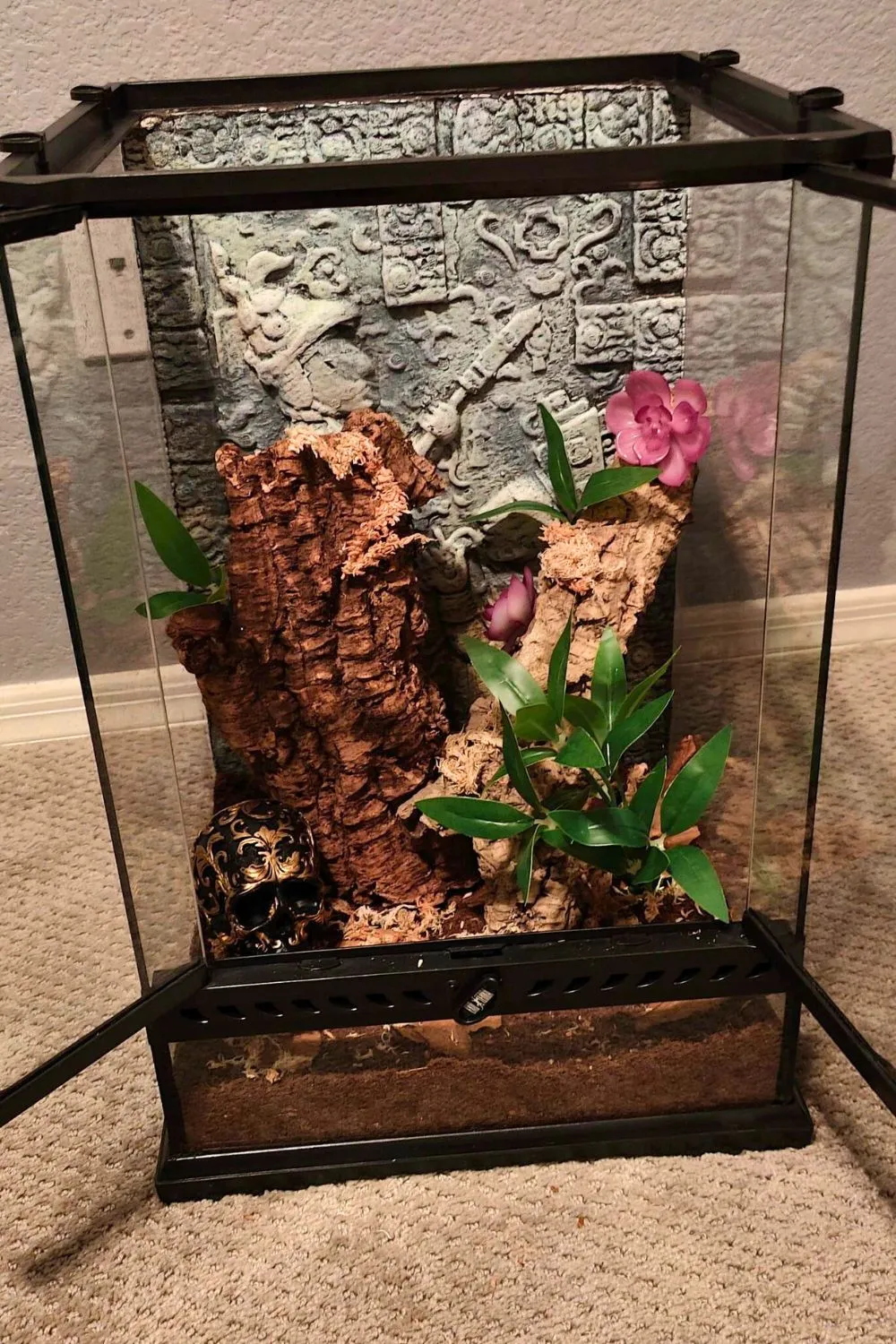Top 5 Tarantula Enclosure Plants Overview
Creating the perfect habitat for your tarantula involves more than just a secure enclosure and proper substrate. Incorporating plants into your tarantula’s enclosure not only enhances its aesthetic appeal but also provides numerous benefits for your arachnid’s well-being. This guide will explore the top 5 plant choices suitable for your tarantula enclosure, providing insights into their care, and how they contribute to a thriving environment for your eight-legged friend. These plants will help you to create a naturalistic and enriching environment that mimics the tarantula’s natural habitat.
Why Use Plants in a Tarantula Enclosure?
The inclusion of plants in your tarantula’s enclosure is a game-changer, providing a range of advantages that contribute to a healthier and more stimulating environment. They go far beyond mere decoration, playing a vital role in regulating humidity, improving the molting process, and enriching the overall habitat for your tarantula. Using plants can drastically change the overall comfort of your pet, creating a habitat closer to their natural one.
Benefits of Live Plants
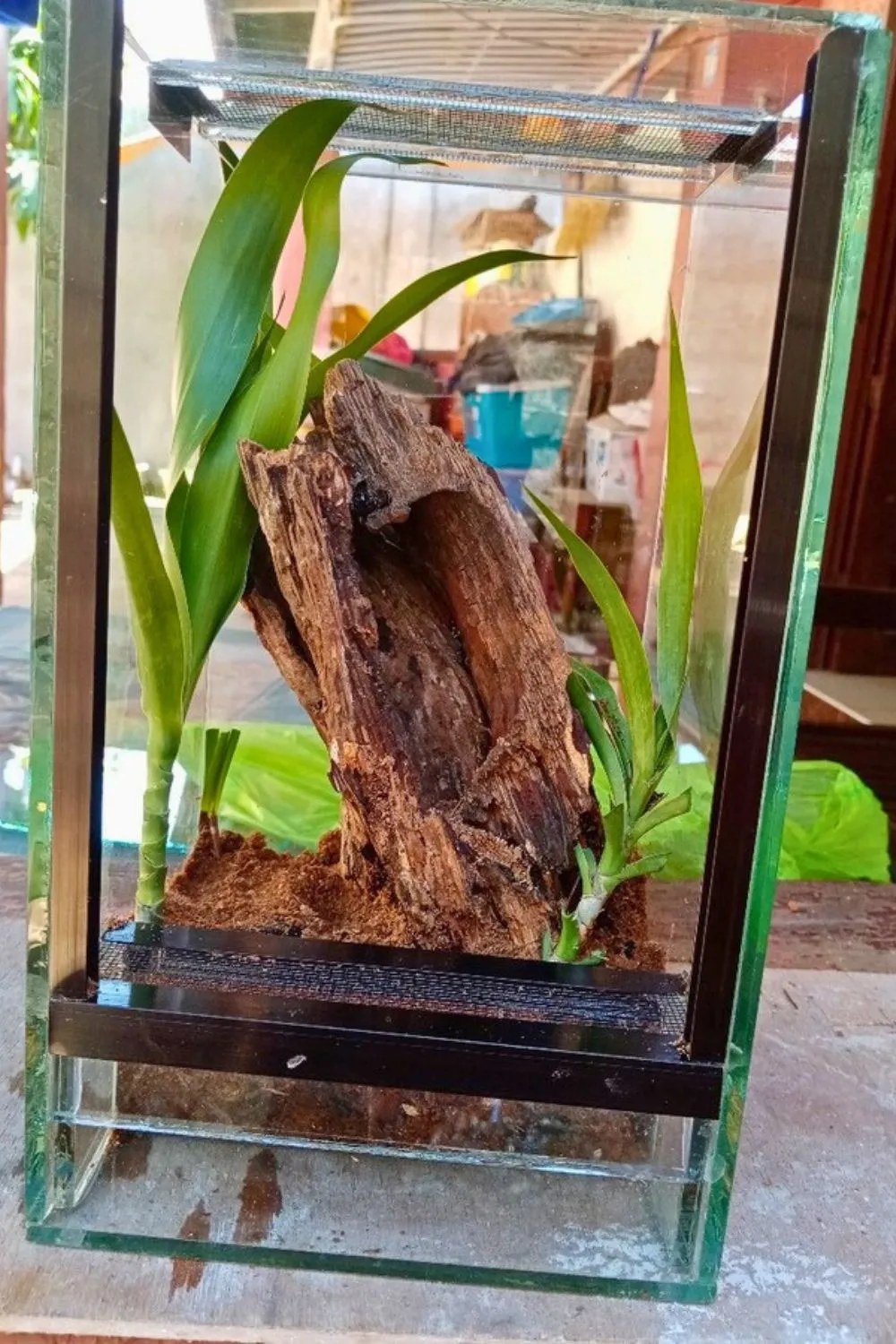
Improved Humidity and Molting
Live plants play a crucial role in regulating humidity levels within the enclosure. They release moisture into the air through transpiration, creating a more humid environment that is essential for your tarantula’s health. Proper humidity is especially crucial during the molting process. A humid environment helps prevent the exoskeleton from drying out, allowing the tarantula to shed its old skin more easily. Without adequate humidity, molting can become difficult, potentially leading to health issues or even fatalities. The addition of plants can regulate the humidity of the habitat, preventing issues during this sensitive process.
Naturalistic Environment
Plants contribute to a more naturalistic and stimulating environment, replicating the tarantula’s natural habitat. This can reduce stress and encourage natural behaviors such as burrowing, hiding, and exploring. By providing a more complex and engaging habitat, you can significantly improve your tarantula’s overall well-being. A naturalistic setup not only benefits the tarantula but also enhances the aesthetic appeal of the enclosure, making it more enjoyable to observe. The plants will help you to create an engaging and beautiful environment.
Top Plant Choice 1

The first choice to consider is a suitable species of Ficus, such as a creeping fig. These plants are relatively easy to care for and thrive in the humid conditions favored by tarantulas. Creeping figs are also excellent choices for providing cover and hiding places for your tarantula, enhancing the security and natural feel of the enclosure. They have a spreading growth habit, making them perfect for covering the enclosure walls and providing a lush, green backdrop.
Plant Characteristics and Care
Creeping figs require moderate light and consistent moisture. Ensure the soil stays slightly damp but not waterlogged. Regular misting helps maintain the humidity levels beneficial for both the plant and the tarantula. Pruning is essential to manage the plant’s growth and prevent it from taking over the enclosure. The leaves can also be quite delicate, so handle them carefully during maintenance. Consider the lighting and watering needs of these plants, ensuring a balance that supports the plant’s health and the tarantula’s environment.
Ideal Enclosure Setup
Plant the creeping fig in a well-draining substrate, such as a mix of coco coir, sphagnum moss, and a small amount of vermiculite. Provide a shallow dish of water for the tarantula and consider adding leaf litter for added enrichment. Position the plant where it receives indirect light. Monitor the plant’s growth and trim as needed to maintain a balance between providing cover and allowing the tarantula ample space to move around. Ensure the plant is securely planted so it does not pose a risk to your tarantula.
Top Plant Choice 2
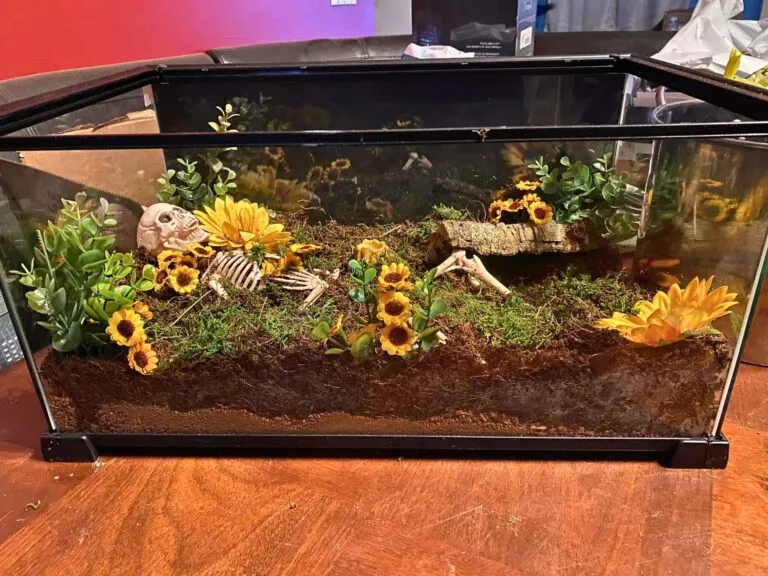
Next on the list, the pothos is another excellent choice for tarantula enclosures. Pothos plants are incredibly adaptable and can thrive in low-light conditions. They offer a lush, green appearance that is easy to maintain. The trailing vines of pothos provide excellent cover for your tarantula, offering a sense of security and a place to hide. Their resilience and adaptability make them perfect for beginners.
Plant Characteristics and Care
Pothos plants are remarkably easy to care for. They tolerate low light levels and require moderate watering. Allow the soil to dry out slightly between waterings to prevent root rot. Pruning is simple; simply trim the vines to maintain the desired size and shape. These plants are known for their air-purifying qualities, enhancing the overall environment within the enclosure. Proper care involves minimal effort and consistent upkeep to maintain optimal growth.
Ideal Enclosure Setup
Pothos can be planted directly into the substrate or potted separately. If planting directly, use a well-draining substrate to prevent waterlogging. If potted, choose a small, lightweight pot. Place the plant in a location that receives indirect light. The vines can be trained to climb the enclosure walls or allowed to trail along the substrate, providing cover and visual interest. Ensure they are placed in a way that the tarantula can move around freely.
Top Plant Choice 3

Thirdly, the spider plant (Chlorophytum comosum) is another great choice. These plants are known for their air-purifying properties and ability to thrive in various conditions. Their arching leaves and the ability to produce plantlets make them an attractive and functional addition to any tarantula enclosure. They are relatively easy to propagate, allowing you to create more plants as needed.
Plant Characteristics and Care
Spider plants require moderate light and watering. Allow the soil to dry out slightly between waterings to prevent root rot. Spider plants are adaptable and can tolerate some neglect, but regular care will ensure optimal growth and appearance. Pruning is minimal. Simply remove any yellowing or dead leaves. The key to successful spider plant care is to balance light and water to maintain the plant’s health.
Ideal Enclosure Setup
Spider plants can be planted in a well-draining substrate or potted. If potted, choose a pot that is not too large to prevent the soil from staying wet for too long. Place the plant where it receives bright, indirect light. Spider plants can be suspended from the top of the enclosure or placed on the ground. The plantlets that grow can be removed and replanted to create more plants, making them a sustainable choice for your enclosure.
Top Plant Choice 4

Fourth, the nerve plant (Fittonia albivenis) is a beautiful choice. Nerve plants, also known as mosaic plants, are admired for their striking veined leaves and preference for high humidity. They provide a vibrant touch of color and a sense of natural beauty. The small size makes them perfect for smaller enclosures.
Plant Characteristics and Care
Nerve plants prefer high humidity and indirect light. Keep the soil consistently moist, but avoid overwatering. They are sensitive to changes in their environment and require careful attention. Provide gentle misting to maintain the necessary humidity levels. Pruning is minimal. Pinch back any leggy growth to encourage bushier growth. Maintaining consistent conditions is key to the success of this plant.
Ideal Enclosure Setup
Nerve plants thrive in a well-draining substrate. Position the plant in an area with consistent moisture and indirect light. Ensure there’s good air circulation to prevent fungal issues. Nerve plants appreciate a warm environment. Regular misting helps maintain the humidity necessary for their growth. Ensure the setup promotes a stable and humid environment for both the plant and your tarantula.
Top Plant Choice 5
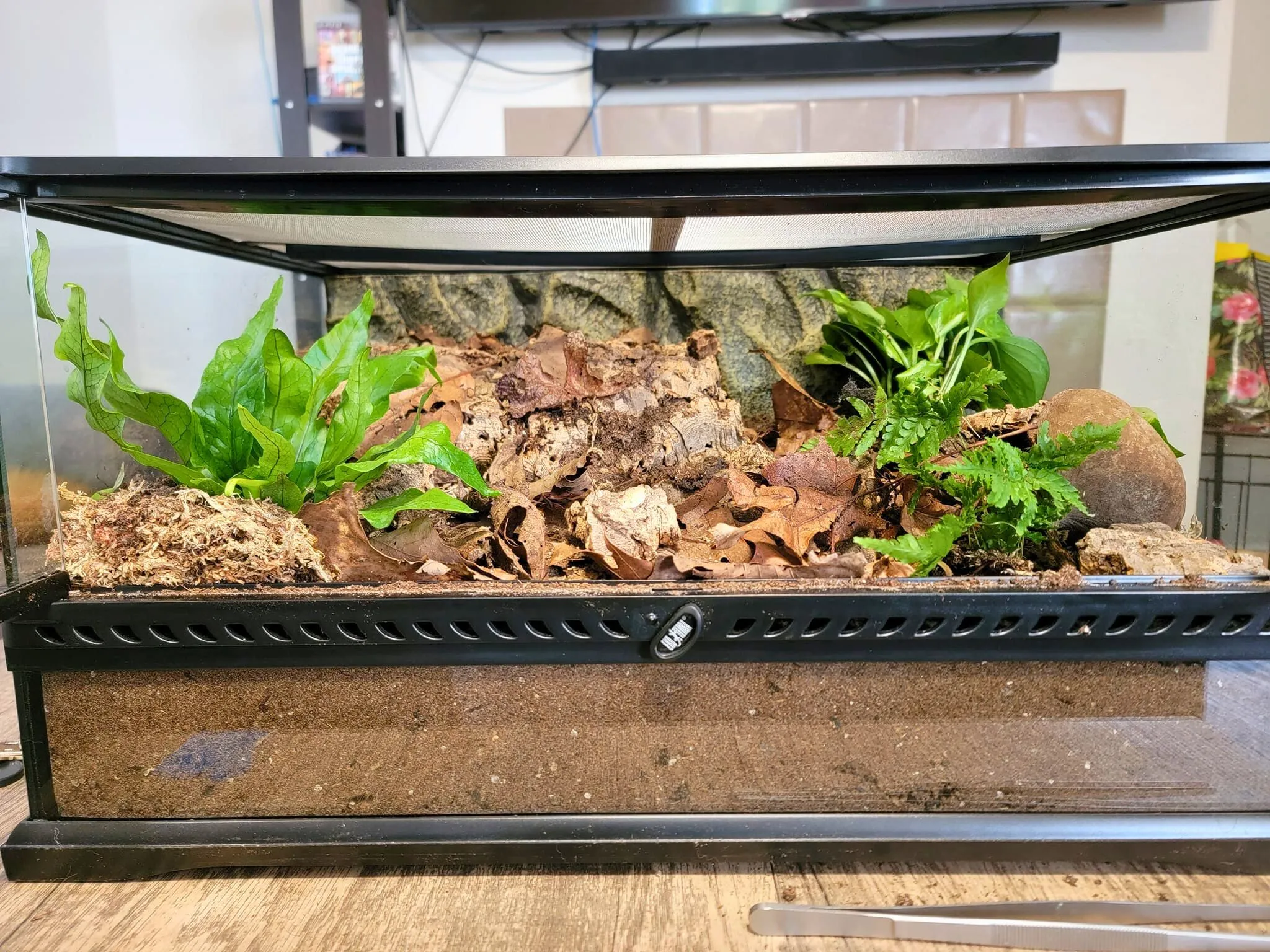
Finally, the air plant (Tillandsia) is a low-maintenance option. Air plants do not require soil. They obtain their nutrients from the air. They provide a unique and attractive addition to your enclosure. They are easy to manage and offer a distinct aesthetic. This makes them an ideal choice for those seeking simplicity without compromising on the benefits of live plants.
Plant Characteristics and Care
Air plants require bright, indirect light. Mist them regularly, or soak them in water for about 20-30 minutes every one to two weeks, depending on humidity levels. Air plants are easy to care for, requiring minimal effort. Ensure they dry out completely after watering to prevent rot. They do not require soil and can be placed in various locations within the enclosure. Maintaining humidity and light is the key.
Ideal Enclosure Setup
Air plants can be attached to cork bark, branches, or decorations within the enclosure. They can also be placed on the substrate. Ensure they receive good air circulation. Their placement allows them to receive adequate light and moisture. Consider the species of air plant, as needs vary. Proper placement and care will make your air plant thrive in your enclosure.
Maintaining Your Tarantula Enclosure Plants
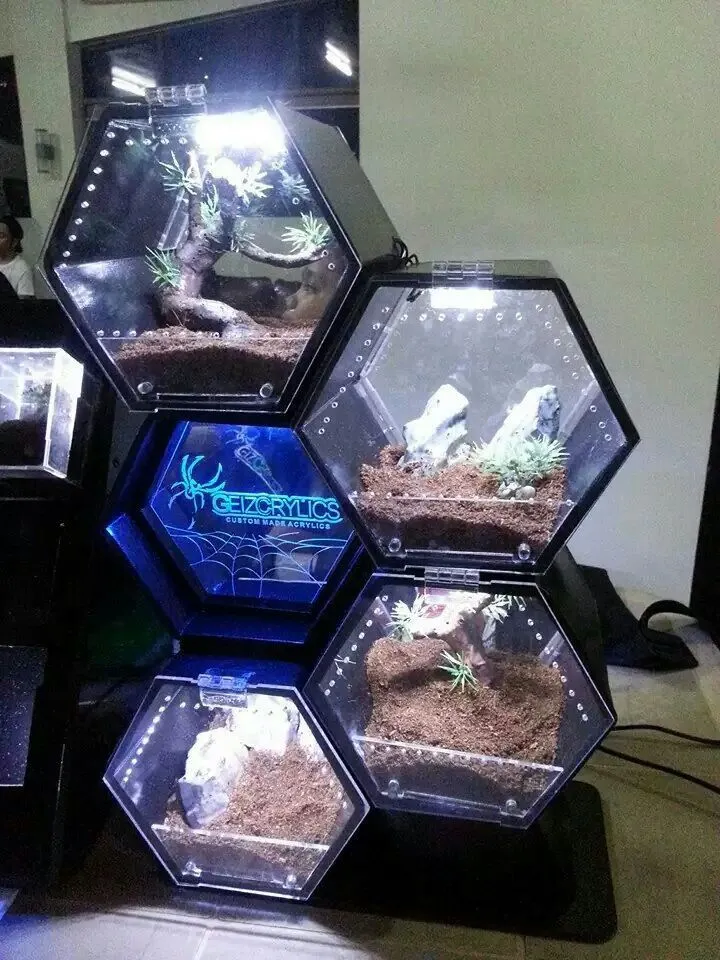
Lighting Requirements
The right lighting is essential for your plants’ health. Most plants thrive in indirect sunlight, so avoid placing the enclosure in direct sunlight. Use artificial lighting like LED grow lights or fluorescent bulbs if natural light is insufficient. LED lights are energy-efficient. Monitor the plants for signs of too much or too little light. Adjust the lighting setup accordingly to ensure optimal growth.
Watering and Humidity
Proper watering and humidity levels are vital for plant survival. Maintain consistent humidity using misting, or a small water dish. Avoid overwatering, which can lead to root rot. Monitor the substrate moisture levels regularly, and adjust watering frequency accordingly. Consider ventilation to prevent mold and mildew. Regular monitoring and adjustments will help to keep your plants healthy.
Substrate and Soil
The substrate provides support and nutrients for your plants. Use a well-draining substrate that promotes good aeration. Coco coir, sphagnum moss, and vermiculite are excellent choices. Regularly check the substrate to ensure it remains clean and healthy. Replace the substrate periodically to prevent the buildup of waste products. Proper substrate management helps sustain the health of both the plants and your tarantula.
Choosing the Right Plants for Your Tarantula
Consider Tarantula Species
The choice of plants should align with your tarantula’s species and its specific habitat. Some species need high humidity, while others prefer drier conditions. Research your tarantula’s natural environment to choose plants that mimic its native habitat. Matching the plant selection to the tarantula’s needs ensures they thrive. Different species will thrive under specific conditions, and understanding their needs is essential.
Plant Size and Placement
Choose plants that fit well within the enclosure, leaving sufficient space for your tarantula. Avoid overcrowding, which can restrict movement. Consider the mature size of the plants. Strategically place plants to provide cover and create visually appealing habitats. Arrange the enclosure to provide a balanced and enriching environment.
Toxic Plants to Avoid
Always ensure the plants you choose are non-toxic to tarantulas. Research any plant’s potential toxicity before introducing it to the enclosure. Common toxic plants include certain varieties of lilies, ferns, and ivy. Prioritizing safety is essential for protecting your pet. Avoid any plants that could potentially harm your tarantula to keep them safe.
Final Thoughts
Incorporating plants into your tarantula’s enclosure enhances both the aesthetic appeal and the well-being of your pet. By choosing the right plants, providing proper care, and considering your tarantula’s specific needs, you can create a thriving, enriching habitat. Remember, the best enclosure is one that provides a safe, stimulating, and natural environment for your tarantula, allowing it to thrive and exhibit its natural behaviors. By selecting the correct plants you can make an enclosure that your tarantula will love and that you will enjoy as well.
